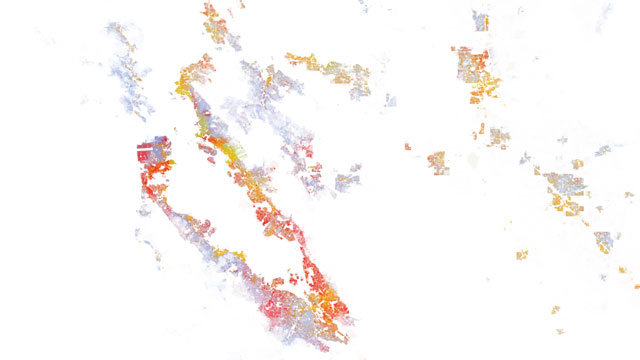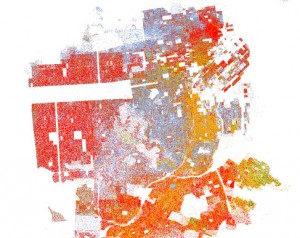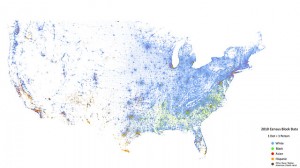
Just how racially integrated is the Bay Area, a region that many of us like to think and talk about as one of the most diverse in the United States?
The short answer: the Bay Area is more integrated than many other parts of the country, but neighborhoods here definitely break down along racial lines.
The long answer: Demographic researcher Dustin Cable at University of Virginia’s Weldon Cooper Center for Public Service has created an incredible map showing the 308,745,538 people counted in the 2010 census as dots. The dots are color-coded by race and ethnicity as reported in the 2010 census: Whites are coded as blue; African-Americans, green; Asians, red; Hispanics, orange; and all other racial categories are coded as brown.
The result is a map that gives a dramatic idea how communities break down along racial lines and conversely where more integration has taken place. The Bay Area looks like a rainbow from afar, but zoom in on any particular city and racial and ethnic lines emerge.

San Francisco's western neighborhoods, the Richmond and Sunset districts, are largely red, representing a high Asian population, with a sprinkling of blue, for white people. While it may feel that white hipsters have taken over the Mission, the map still shows a significant Latino population, especially on the eastern edge of the neighborhood. And, while Bayview and Hunters Point are still neighborhoods with a significant African-American population, those areas are changing as the Asian and Latino populations increase.
